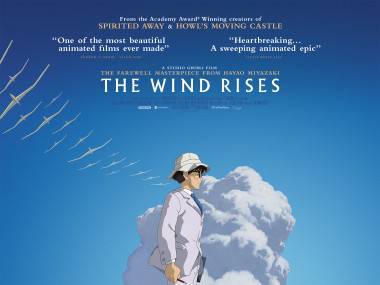Hayao Miyazaki’s ‘The Wind Rises’ Review
Released in Japan almost a year ago, The Wind Rises is finally making its way to the UK! Hayao Miyazaki has brought us another classic (this time not quite so directed at children); a fictionalised biography of Jiro Horikoshi (1903-1982), an aeronautical engineer who designed aircraft used by the Empire of Japan during World War Two. It is a film of two halves; one of Jiro the brilliant engineer, the other of Jiro the boy who loses his hat and falls in love with the girl who catches it, Nahoko. A film driven by dreams, it opens with young Jiro coming to the heart-wrenching realisation that he can never be a pilot due to his near-sightedness. Not one to give in to despair however, he holds on to this:
“Le vent se lève! Il faut tenter de vivre!”
(The wind is rising! We must try to live!)
– Paul Valéry
Jiro decides instead that he wants to design aeroplanes – beautiful aeroplanes – and starts on his journey.
Familiar Ghibli themes resonate throughout the film; as the story spans from the end of the First World War to the beginning of the Second, there is a very dramatic mix between the realities of war and the longing for peace. Equally the themes of love and the duty we have to those we love; Jiro’s relationship with Nahoko becomes more and more difficult and they must go through many obstacles to stay together. The main theme however is that of following your dreams; the film is full of inspirational sayings to quote when you need them!
Jiro’s dreamland becomes a haven as tensions rise, both on a world scale and on a familial level. As the secret service become interested in Jiro, he is warned by friends that people have been ‘disappearing’ and so he must go into hiding. At the same time the strain on his relationship with Nahoko is reaching new levels. Jiro works through these obstacles by day and by night dreams of a graceful aeroplane soaring through the sky, gliding and spinning, light as a paper plane. Venetian music plays in the background, calling up images of gondolas and their graceful movements. Count Caproni, a famous Italian aeronautical engineer stands by Jiro, in a graveyard of old planes – old ideas – as they watch the plane’s movements through the clouds and speak of building beautiful aeroplanes that won’t be used for war.
https://www.youtube.com/watch?v=PlaW8-2T1HI
The film is beautifully animated in traditional 2D, with occasional touches of CG for effect. From a technical point of view, one standout scene depicts the Great Kanto Earthquake of 1923. The animation of the sequence is superb, from the shockwave making the ground roll to houses in the distance being destroyed and catching alight. Equally, the animation of the aeroplanes is fantastic. Both 2D and CG were used; 2D for the traditional wooden planes, and CG for the modern metallic ones.
The Japanese voice cast works very well, although the voices of young and old Jiro didn’t seem a particularly good match for each other. Whether the English-dubbed version of the film (featuring an all-star English voice cast including Joseph Gordon-Levitt, Emily Blunt and John Krasinski) adds to the film or detracts from it – as is often, unfortunately, the case – remains to be seen.
The film ends on an incredibly bittersweet note (which I won’t spoil!) that will leave even the most cynical with tears in their eyes. Somehow Miyazaki has managed to successfully make yet another film with whimsy, lightheartedness, sadness and heartache and tie it all together beautifully. We follow Jiro’s journey through all of the ups and downs and love him for his determination to live life well and to follow his dreams.
The Wind Rises is due out in the UK on May 9th


